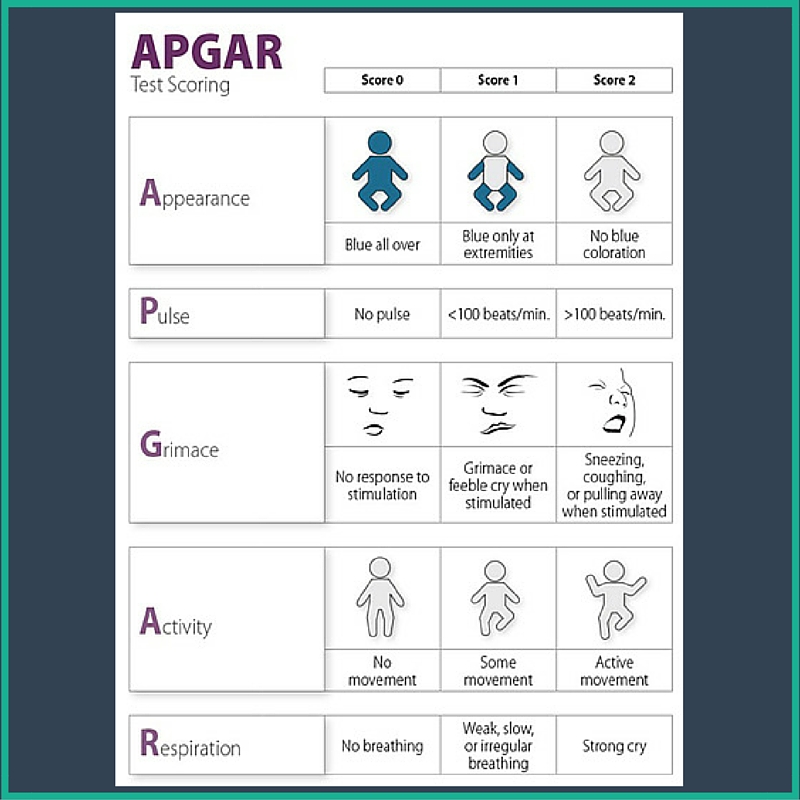

This is the cord that connects an unborn baby to the placenta (nutrient supplier) inside your body. The doctor may test the blood in your newborn's umbilical cord. Your healthcare provider weighs your newborn right after birth. Your healthcare provider finds out how many weeks you were pregnant when you give birth.

What other tests may be used with the Apgar score? If your newborn had a medical problem during pregnancy, he or she may have a low Apgar score. Your newborn's Apgar score may be low if he or she had trouble breathing right after birth. Dehydration is a lack of body fluids, such as water. Your newborn's Apgar score may be low if you took certain medicines or were dehydrated while having your baby (during labor and delivery). Problems during pregnancy, such as an infection or injury from a fall, may cause a low Apgar score.The Apgar score may not be as helpful to healthcare providers for newborns with very low birth weights, below 3.3 pounds (1500 grams). The Apgar score is useful for healthcare providers if a newborn has a low birth weight, between 3.3 and 5.5 pounds (1500 to 2499 grams). The Apgar score may be low if your newborn was born premature (earlier than expected). Your newborn may need other tests to learn about his or her health now and in the future. One healthcare provider may not give the same Apgar score to a newborn as another healthcare provider.What are the limitations of the Apgar score?
#Apgar score full
2 - Your newborn has a strong cry and takes full breaths.1 - Your newborn has slow, weak breaths that are not regular.Respiration: This part of the test checks how fast, how deep, and how strong a newborn is breathing:.2 - Your newborn moves his or her arms and legs a lot.1 - Your newborn has some movement in his or her arms and legs.0 - Your newborn has limp (weak) muscles.Activity: This part of the test checks a newborn's muscles:.2 - Your newborn has a strong cry and pulls his or her hand or foot away from pain.1 - Your newborn frowns but does not move his or her hand or foot away from pain.0 - Your newborn does not react to pain.Grimace: This part of the test checks a newborn's reaction to pain, such as rubbing the bottom of his or her feet:.2 - Your newborn's heartbeat is more than 100 beats per minute.1 - Your newborn's heartbeat is less than 100 beats per minute.Pulse: This part of the test checks a newborn's heartbeat:.

#Apgar score skin


 0 kommentar(er)
0 kommentar(er)
